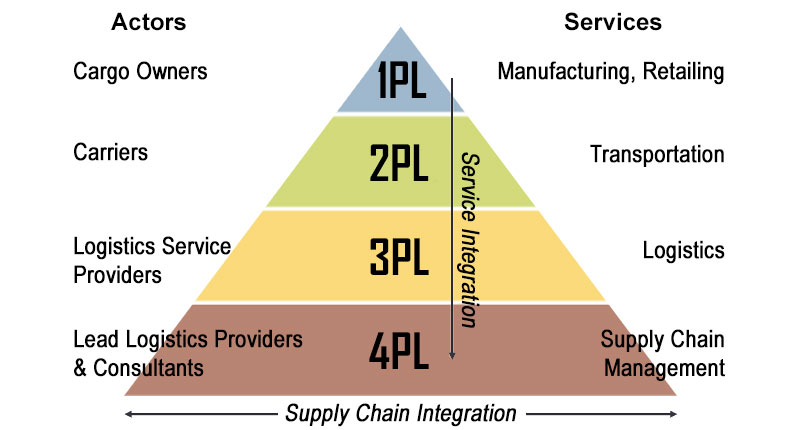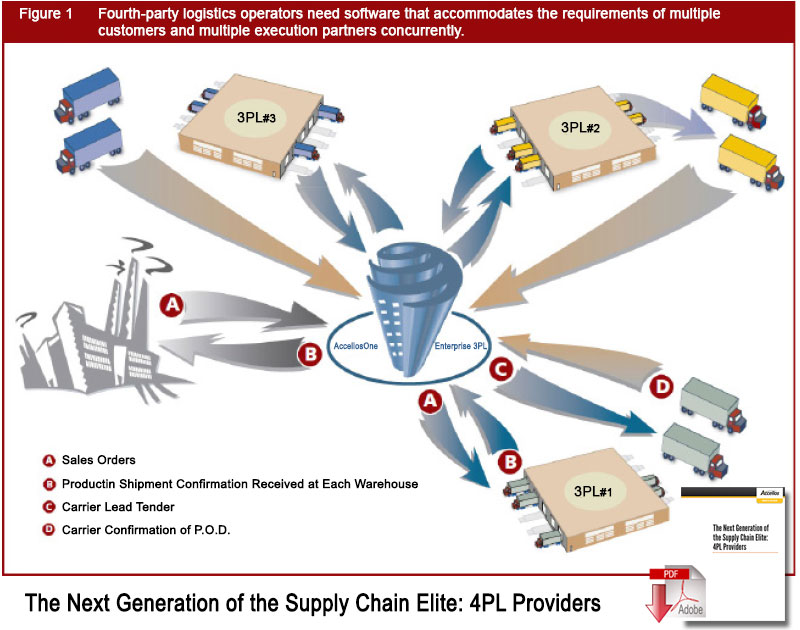3PL vs 4PL: The Great (LinkedIn) Debate
This is evident in a LinkedIn Discussion (which you can read in it’s entirety here) where the debate of 3PL vs 4PL garnished 70 comments!
In the 3PL vs 4PL debate, Adrian Chen, an Advisory Board Member (Asia Pacific) at ISCEA - International Supply Chain Education Alliance had this great comment to finish the debate:
“Great comments from many herein, although it would be fantastic to hear more from other logistics professionals, but with gratitude, many of the comments hold true to the fact that we have an over-lapping of the functionality from within the 3PLs in “walking that extra mile” to accommodate many of the responsibilities that would assume a 4PL’s role ultimately.
I see the generation of 4PLs evolving & advancing to an extent from the legacy 3PLs work scope with specific themes created to address value-add requirements with their clients’ partnerships. The basic concepts of 3PLs are hereto stay (specifically the assets-based providers) & the evolution to extend services as a 4PL will be the deciding factor many shippers (small companies or large multinational corporations) stand on in their selection of a provision partner. Naturally, we do see spin-offs again, from a 4PL pint-of-view, whereby some retain specialty in specific knowledge & skill-sets (ie. IT / MRP / direct & indirect sourcing etc.), but yet there are many of the 4PLs who would be entrenched in the general provisions as “3PL managers” to co-ordinate the overall fulfillment processes B2B2C ultimately.”

3PL vs 4PL: The Academic Definitions from CSCMP
The Council of Supply Chain Management Professionals’ glossary, defines both 3PL and 4PL, and is one I have found to be generally true across the board.
The CSCMP defines 3PL as follows:
Outsourcing all or much of a company’s logistics operations to a specialized company. The term “3PL” was first used in the early 1970s to identify intermodal marketing companies (IMCs) in transportation contracts. Up to that point, contracts for transportation had featured only two parties, the shipper and the carrier. When IMCs entered the picture—as intermediaries that accepted shipments from the shippers and tendered them to the rail carriers—they became the third party to the contract, the 3PL.
Definition has broadened to the point where these days, every company that offers some kind of logistics service for hire calls itself a 3PL. Preferably, these services are integrated, or “bundled,” together by the provider. Services they provide are transportation, warehousing, cross-docking, inventory management, packaging, and freight forwarding. In 2008 legislation passed declaring that the legal definition of a 3PL is “A person who solely receives, holds, or otherwise transports a consumer product in the ordinary course of business but who does not take title to the product.”
Related: Global Logistics - Demystifying the 4PL
Third-party logistics providers are:
- Freight forwarders
- Courier companies
- Other companies integrating & offering subcontracted logistics and transportation services
The CSCMP defines 4PL as follows:
Differs from third party logistics in the following ways; 1)4PL organization is often a separate entity established as a joint venture or long-term contract between a primary client and one or more partners; 2)4PL organization acts as a single interface between the client and multiple logistics service providers; 3) All aspects (ideally) of the client’s supply chain are managed by the 4PL organization; and, 4) It is possible for a major third-party logistics provider to form a 4PL organization within its existing structure.
However, 4PL was oringally defined by Accenture as a trademark in 1996 and defined as “A supply chain integrator that assembles and manages the resources, capabilities, and technology of its own organization with those of complementary service providers to deliver a comprehensive supply chain solution.”, but is no longer registered.
4PLs have also been referred to as “Lead Logistics Providers”. Now a new crop of companies have emerged who are actual transportation companies too. While a 4PL is sometimes described as non-asset-owning service provider, their role is to provide broader scope managing of the entire supply chain.
Ok, So we Got 3PL vs 4PL, But What About all These Other “PLs?”
In the “PL” terminology, it is important to differentiate the 3PL vs. 4PL from the other logistics layers:
- First Party Logistics (1PL). Concerns beneficial cargo owners which can be the shipper (such as a manufacturing firm delivering to customers) or the consignee (such as a retailer picking up cargo from a supplier). They dictates the origin (supply) and the destination (demand) of the cargo with distribution being an entirely internal process assumed by the firm. With globalization and the related outsourcing and offshoring of manufacturing, distribution services that used to be assumed internally tend be contracted to external service providers.
- Second Party Logistics (2PL). Concerns the carriers that are providing a transport service over a specific segment of a transport chain. It could involve a maritime shipping company, a rail operator or a trucking company that are hired to haul cargo from an origin (e.g. a distribution center) to a destination (e.g. a port terminal).
Now, along comes the 5PL who sometimes define themselves as broadening the scope further to e-business.
You might question anything more elaborate than a 3rd party providing logistics consultation or management, no matter how advanced or far-reaching their service might be. So are they still 3PLs who just invented a fancy title to set them apart from the competition, or is there a real differentiation?
A 4PL is neutral and will manage the logistics process, regardless of what carriers, forwarders, or warehouses are used. The 4PL can and will even manage 3PLs that the customer is already currently using. Many 4PLs have addressed the huge requirements of electronic interface between numerous companies.
This area is where it’s difficult to define Cerasis as a 3PL or 4PL. We are a non-asset logistics provider ,who provides technology and services focusing on over the road motor freight management, specifically offering a TMS with services around carrier relationship and inbound freight programs. So, loosely, we belong somewhere in between 3PL and 4PL. What would you call us, given that knowledge? And how would you define 3PL vs 4PL? Comments welcomed below.
Source: Cerasis Blog
Article topics
Email Sign Up
















